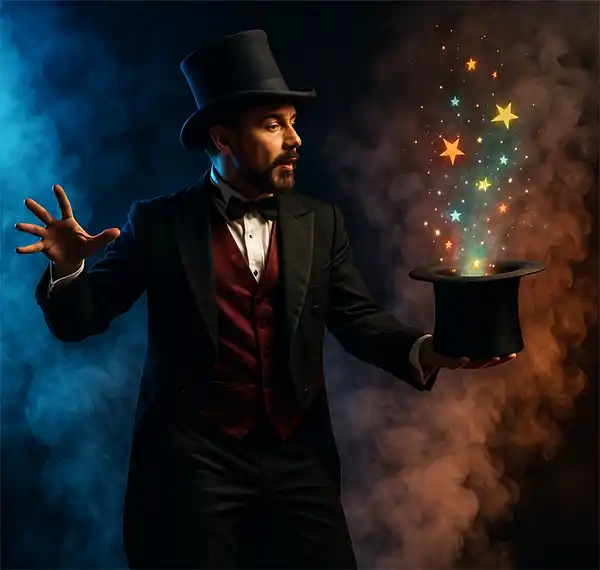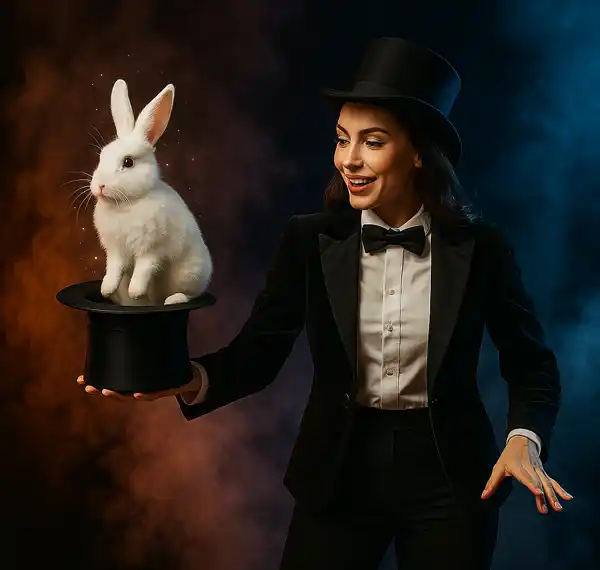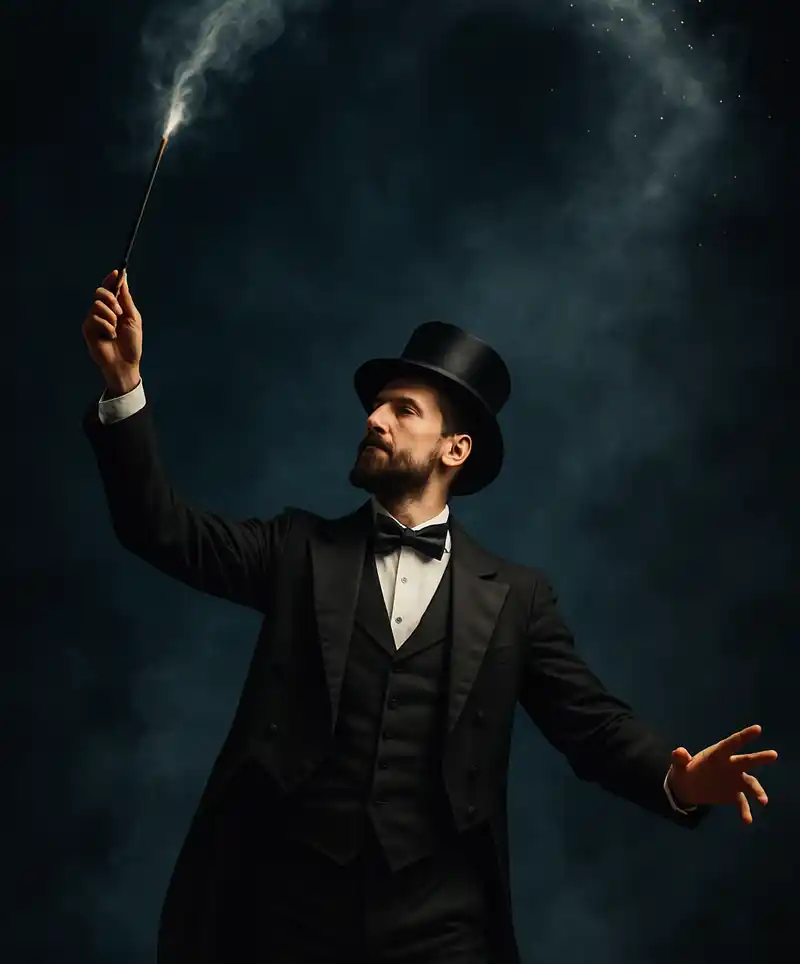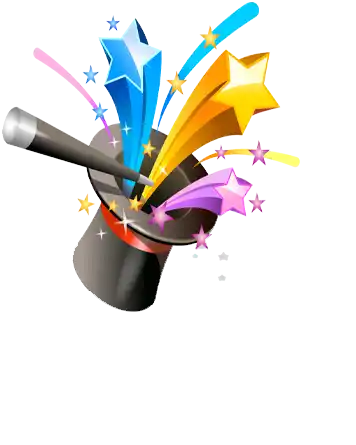 Where reality checks bounce and rabbits get hazard pay.
Where reality checks bounce and rabbits get hazard pay.
Every March 29th, we celebrate National Smoke and Mirrors Day—an observance dedicated to illusion, deception, and the fine art of making people say, “Wait, what just happened?” It’s a day for sleight of hand, misdirection, and wondering whether your favorite magician just pulled off a mind-blowing trick… or had a very cooperative twin.
Whether it’s on stage, in politics, or when your dog mysteriously “forgets” how to sit after three weeks of training, smoke and mirrors are everywhere.
What Is Smoke and Mirrors, Anyway?
(Spoiler: It’s not just for haunted houses and overly dramatic talent shows.)
At its core, "smoke and mirrors" is about illusion—manipulating perception to make people see what isn't there, or miss what is. The phrase has its roots in 19th-century stage magic, when performers used literal smoke (yes, from actual fire or chemical concoctions) and angled mirrors to distort reality.
Mirrors were often set at a 45-degree angle to reflect hidden compartments, trapdoors, or objects offstage—while the smoke created a hazy distraction to keep prying eyes from noticing the sleight of hand. Imagine someone juggling flaming swords behind a curtain while you’re fixated on a puff of smoke and a glint of glass. Voilà! Magic.
Over time, the trickery became more sophisticated, and the phrase slipped into everyday language. Now, we use "smoke and mirrors" to describe everything from misleading advertising to overly complicated coffee shop menus. (Is it a mocha with caramel drizzle, or just steamed milk sorcery?)
But the magic world never forgot its roots. Today’s illusionists still build on these old-school techniques, layering them with technology, stagecraft, and good old-fashioned misdirection. The classics never die—they just vanish and reappear wearing a sparkly cape.
The Psychology of Being Fooled (And Loving It)
There’s something deliciously human about wanting to be fooled—as long as we’re in on the joke. When a magician pulls a coin out of your ear or levitates a card above your hand, your brain lights up like a disco ball. Why? Because magic plays directly with how we process reality.
Our brains are incredible at recognizing patterns and filtering information—so good, in fact, that they often take shortcuts. Magicians take advantage of this. They know exactly where you’ll look, what you’ll expect, and how long it takes for your brain to register that something weird just happened. By the time you go, “Wait a second…,” the rabbit is already halfway to his dressing room.
Some of the brain’s favorite quirks that magicians exploit:
- Selective Attention: We focus on what seems important and ignore the rest. (Just like when you can’t find your glasses… on your head.)
- Expectation Bias: We tend to see what we expect to see. Magicians use that against us every time.
- Change Blindness: Big changes can happen right in front of us—and we miss them because our brain decides they’re not relevant.
But here's the twist: we enjoy it. Being fooled by a magic trick feels playful, not threatening. It gives us a chance to be surprised, to laugh at ourselves, and to marvel at the cleverness of another human. Unlike being tricked in real life (hello, email scams and expired coupons), magic is a safe space for deception—a sort of emotional playground for our curiosity.
And let’s be honest—there’s something satisfying about realizing your all-knowing brain can still be outsmarted by someone with a deck of cards and excellent timing.
 10 Fun Ways to Celebrate National Smoke and Mirrors Day
10 Fun Ways to Celebrate National Smoke and Mirrors Day
- Learn a Magic Trick – Start with something easy, like the “pick a card” classic. Bonus points if you accidentally convince your cat you’re a wizard.
- Binge a Magic Show – Watch Houdini documentaries, David Blaine specials, or those retro TV magicians who all wore glittery capes.
- Visit an Illusion Museum – Rooms that defy gravity, faces that follow you, walls that wiggle—basically, your brain's worst day at the office.
- Throw a Magic-Themed Party – Invite friends, wear capes, and swap stories of the time your uncle made a coin disappear behind your ear for the 12th time.
- Try DIY Optical Illusions – All you need is paper, pencil, and a strong cup of coffee. Some of these drawings will make your eyeballs file a complaint.
- Pull a Harmless Prank – Not April Fool’s-level chaos, but enough to make someone double-check their reflection. (Bonus points if mirrors are involved.)
- Rewatch “The Prestige” or “Now You See Me” – Two excellent movies that blend smoke, mirrors, and enough plot twists to power a slinky.
- Teach Kids About Illusions – It’s science, art, and confusion—all rolled into one teachable moment.
- Read About the Greats – Houdini, Copperfield, Penn & Teller—they’ve got stories, and many of them involve near-death experiences and really weird props.
- Practice Misdirection in Daily Life – Perfect for avoiding awkward conversations, extra chores, or explaining why there’s glitter all over the dog.
Famous Quotes About Illusion
Illusion isn’t just about pulling rabbits out of hats or making your little cousin believe their nose got stolen. Some of the world’s most clever minds—magicians, philosophers, filmmakers, and the occasional smooth-talking villain—have shared their thoughts on the nature of trickery and perception. These quotes remind us that illusion, at its best, isn’t just a gimmick—it’s an art form, a puzzle, and sometimes, a philosophical wink. Here are a few favorite lines that prove even deception has depth.
"The greatest trick the Devil ever pulled was convincing the world he didn’t exist." – Verbal Kint, The Usual Suspects.
"Magic is just someone spending more time on something than anyone else might reasonably expect." – Teller (yes, the quiet one).
Quick “Did You Know?” Section
Behind every grand illusion and vanishing act is a trove of weird, wonderful facts that prove the world of magic and misdirection is stranger than fiction. Whether it's Houdini's ghost-busting side hustle or the spooky science behind haunted house effects, the history of illusion is full of surprises. These quick-hit nuggets are perfect for dazzling your friends, winning pub quizzes, or just sounding mysteriously informed at your next dinner party.
- Houdini was so skeptical of spiritual mediums that he spent years trying to expose fake ones—while being an escape artist himself.
- Smoke and mirrors are still used in haunted houses, amusement parks, and theatrical performances today. Some things never go out of style.
- Pepper’s Ghost, a 19th-century illusion using glass and lighting, is still used in theme parks like Disney to create ghostly effects. It’s spooky and retro.
In a world that often takes itself too seriously, National Smoke and Mirrors Day is a reminder that not everything has to be logical. Sometimes, it’s fun to be fooled—especially when the magician’s got a great hat and better timing than your uncle’s knock-knock jokes.
So go ahead—embrace the mystery, chase the illusion, and remember: Just because it looks real … doesn’t mean it isn’t cleverly staged with dry ice and reflective glass.
Please Share our Content






 Where reality checks bounce and rabbits get hazard pay.
Where reality checks bounce and rabbits get hazard pay. 10 Fun Ways to Celebrate National Smoke and Mirrors Day
10 Fun Ways to Celebrate National Smoke and Mirrors Day








 "Sláinte!" is a traditional Irish expression used as a toast, equivalent to "Cheers!" in English.
"Sláinte!" is a traditional Irish expression used as a toast, equivalent to "Cheers!" in English.